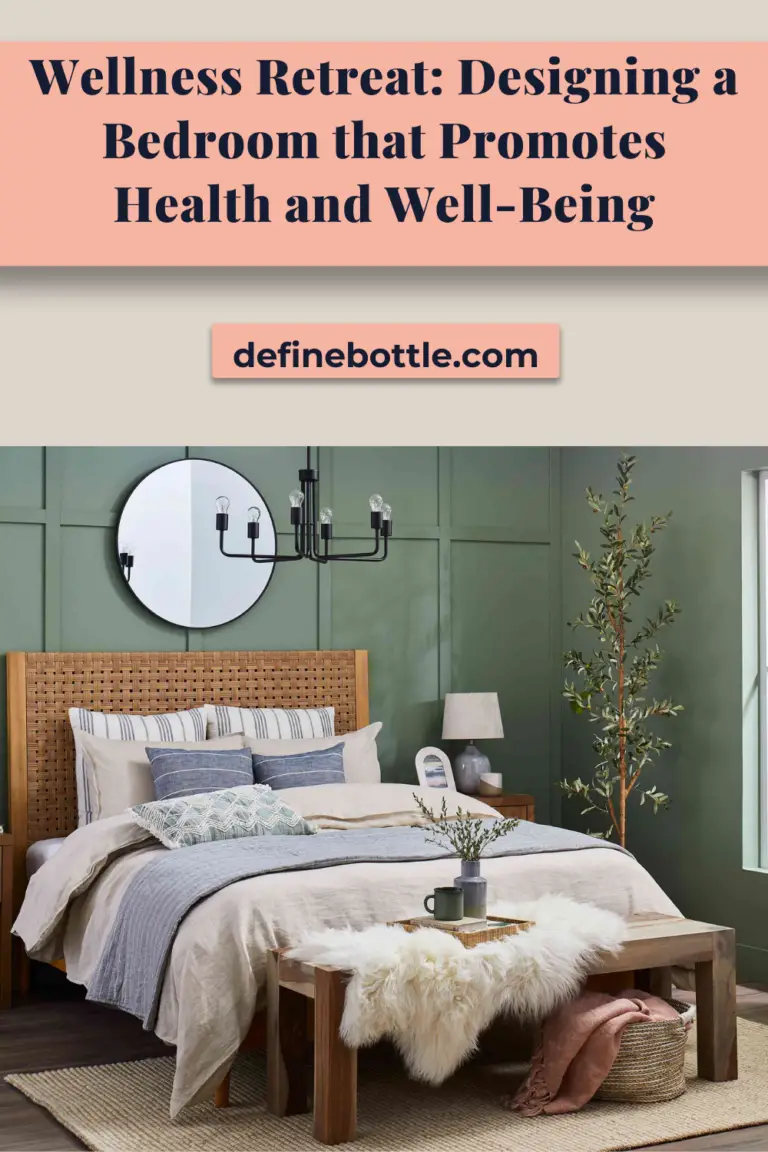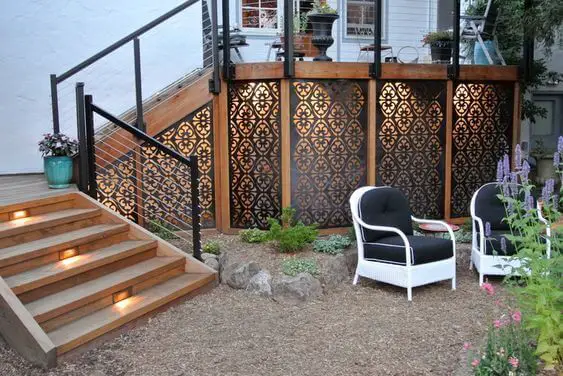Living in today’s fast-paced world, where stress and anxiety are prevalent, finding ways to prioritize health and well-being is crucial. Wellness retreats are becoming an increasingly popular solution. These tranquil havens allow individuals to recharge and reconnect with their mental, emotional, and physical well-being.
A critical element in wellness retreat design is designing a bedroom beautifully, as it cultivates a sense of calm and relaxation. In this article, you’ll learn key considerations for designing a restorative bedroom that fosters health and well-being.
The Importance of Bedroom Design in Wellness Retreats
A bedroom is more than just a place to sleep; it should serve as a sanctuary that nurtures our bodies and minds. The design of a wellness retreat bedroom must aim to create a harmonious environment that supports relaxation and rejuvenation.
You can achieve a serene atmosphere that promotes well-being by combining natural elements, soft colors, and ergonomic furniture. Optimizing the bedroom’s functionality with innovative solutions like an access panel also enhances the user experience, ensuring ease of access to utility systems while maintaining the room’s aesthetic appeal.
Embracing Natural Elements for a Soothing Ambiance
Nature profoundly impacts our well-being, and incorporating natural elements into bedroom design can create a soothingambiance. Opt for organic materials such as wood and stone in the furniture and decor to bring a touch of the outdoors inside.
Integrating large windows to invite ample natural light and provide views of lush greenery or calming landscapes can also elevate your connection with nature. Additionally, potted plants in the room improve air quality and instill a sense of tranquility.
Mindful Color Selection for Relaxation
Color psychology is an essential part of how we feel and think. When designing a bedroom for a wellness retreat, choose colors that evoke relaxation and calmness. Soft, dull colors like baby blues, soft greens, and neutrals that look like dirt can make you feel calm.
Steer clear of bold, jarring colors that may disrupt the room’s harmony and induce stress. The chosen color palette should complement the natural elements in the room, creating a cohesive and inviting space that encourages restorative sleep.
Incorporating Comfortable and Ergonomic Furniture
Comfort should be a top priority when selecting bedroom furniture for a wellness retreat. The bed, in particular, should be high quality and support your body well. To get a good night’s sleep, spend money on a premium mattress and soft sheets. Ergonomic furniture, such as a supportive chair or a cozy reading nook, can contribute to overall well-being, allowing guests to unwind and engage in relaxation activities.
Creating a Clutter-Free Environment
Clutter in the bedroom can create a sense of chaos and unease, hindering relaxation and sleep quality. Adopt a minimalist approach to bedroom design, focusing on essential items and maintaining a clutter-free environment.
Consider integrating storage solutions like the BA-F1 Drywall Inlay Access Panel, which offers a discreet and functional means to access utility systems without compromising the room’s aesthetic. This innovative addition keeps essential maintenance elements hidden while still providing easy access when needed, ensuring a serene and organized space.
Mindful Lighting for Mood Enhancement
Lighting significantly impacts the ambiance of a room and affects our circadian rhythms. To promote a sense of tranquility in a wellness retreat bedroom, incorporate multiple light sources that can be adjusted to different intensity levels.
Dimmer switches or intelligent lighting systems allow guests to create the desired atmosphere for relaxation or meditation. Avoid harsh overhead lighting and choose warm, soft lighting that mimics the gentle glow of candlelight.
Encouraging Digital Detox and Sleep Hygiene
In today’s digital age, promoting a healthy relationship with technology is crucial for overall well-being. Wellness retreat bedrooms should be designed as tech-free zones, encouraging guests to disconnect from electronic devices and embrace a digital detox.
Consider providing a charging station outside the bedroom to discourage phone use during bedtime. Additionally, educating guests about sleep hygiene and establishing a calming bedtime routine can contribute to more restful and rejuvenating sleep experiences.
Integrating Wellness Nooks for Reflection
A wellness retreat bedroom should facilitate moments of reflection and self-care. Designate a corner of the room for a cozy wellness nook where guests can practice meditation, mindfulness, or yoga. Furnish the nook with comfortable cushions, soft blankets, and perhaps a minor water feature or indoor plants to enhance the calming atmosphere. This designated space encourages guests to take time for introspection and self-renewal during their stay.
Harnessing the Power of Aromatherapy
Aromatherapy has been common for many years for its healing benefits in promoting relaxation and reducing stress. Consider incorporating essential oil diffusers or scented candles in the wellness retreat bedroom to saturate the atmosphere with calming fragrances like lavender, chamomile, or eucalyptus. The soothing scents will help create a serene atmosphere, encouraging guests to unwind and drift into a peaceful slumber.
Nature-Inspired Art and Décor
Art and décor inspired by nature can instill a sense of peace and connection to the outdoors. Choose artwork that features landscapes, botanical prints, or abstract nature-inspired designs to bring a touch of the natural world into the bedroom. Additionally, consider incorporating organic textures like woven baskets, bamboo elements, or stone sculptures, which can evoke a sense of grounding and serenity.
Soundproofing for Tranquility
To ensure an undisturbed and restful experience, invest in soundproofing measures for the wellness retreat bedroom. Soundproof materials, like acoustic panels, can help reduce external noise and create a peaceful sanctuary for guests. This function benefits people who have trouble sleeping or want a quiet place to meditate and think.
Integrating Natural Textiles and Fabrics
Opt for natural textiles and fabrics in the bedroom design to enhance comfort and contribute to the overall wellness experience. Soft cotton or linen sheets can help keep your body at a safe temperature so you can sleep well. Use eco-friendly and sustainable materials for curtains, rugs, and upholstery to align with responsible and health-conscious design principles.
Sleep-Enhancing Technology
While promoting a digital detox is essential, certain sleep-enhancing technologies can complement the wellness retreat experience. White noise machines or sleep sound apps can mask external disturbances, facilitating a more restful sleep. Himalayan salt lamps, which emit a warm, calming glow, can aid in creating a relaxing atmosphere conducive to sleep.
Conclusion
What a wonderful opportunity—transforming a mundane room into an oasis of tranquility and restoration. Creating this serene and nurturing environment involves a delicate balance of natural elements, soothing colors, comfortable furniture, and clutter-free spaces. Here, in this deliberately conceived stillness, guests embrace relaxation and introspection.
Like what you just read? Well, we got a lot more articles for you:
12 Sunflower Bedroom Ideas that Warm Your Heart Day and Night
10 Fantastic Grey and Purple Bedroom Ideas You Can Easily Implement In Your Home




